
Issue 100
April 2013
Learn some of the best answers to the left hook hit
PETE IRVING
Pete Irving is a professional welterweight fighter and Fighters Only’s resident fight expert
Maintaining and returning to good hand position is a key skill for any fighter. Being able to instantly throw your punches or cover up is a function of both observation and a good, default hand position.
Hand position is an individual thing, with some fighters preferring to keep their hands high in a Thai, or K-1 style. Others may hold their hands by their chin, or even drop one or both hands low in a boxing style. The important thing is that wherever you habitually hold your hands, that is where you throw your punch from. If you first have to change your hand position before throwing, then your opponent will quickly be able to predict your intentions.
COVER-AND-COUNTER WITH LEFT KNEE

1. Coach Steve is using long Thai pads and a belly pad for knee technique.
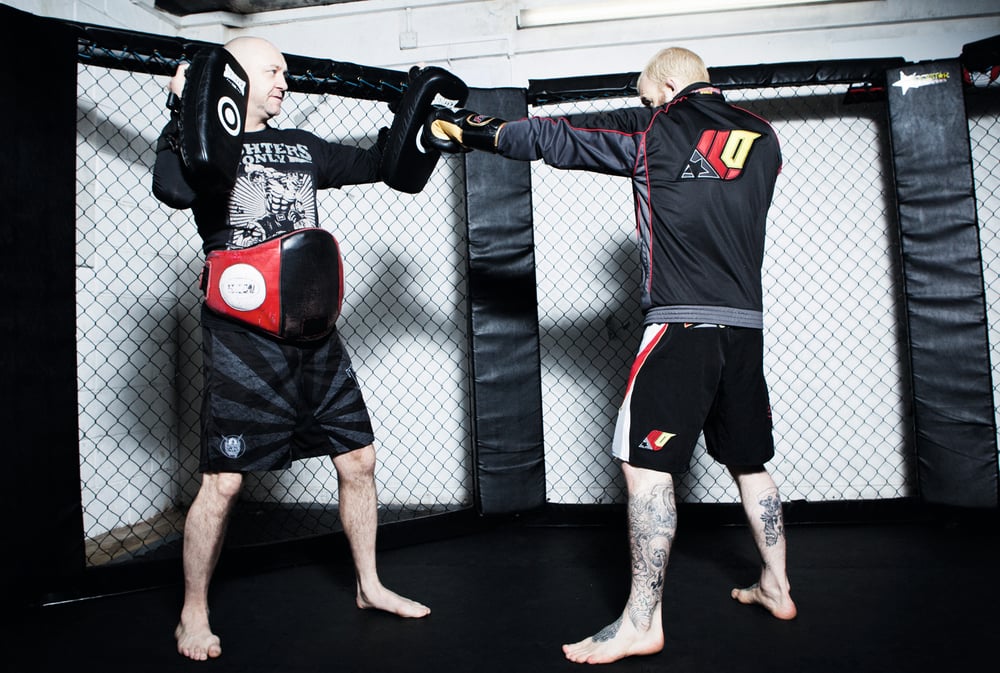
2. Steve shows the jab, and ‘catches’ Pete’s punch. Steve only moves the pad an inch or two towards Pete’s incoming punch. Too much and Steve does the work for him.
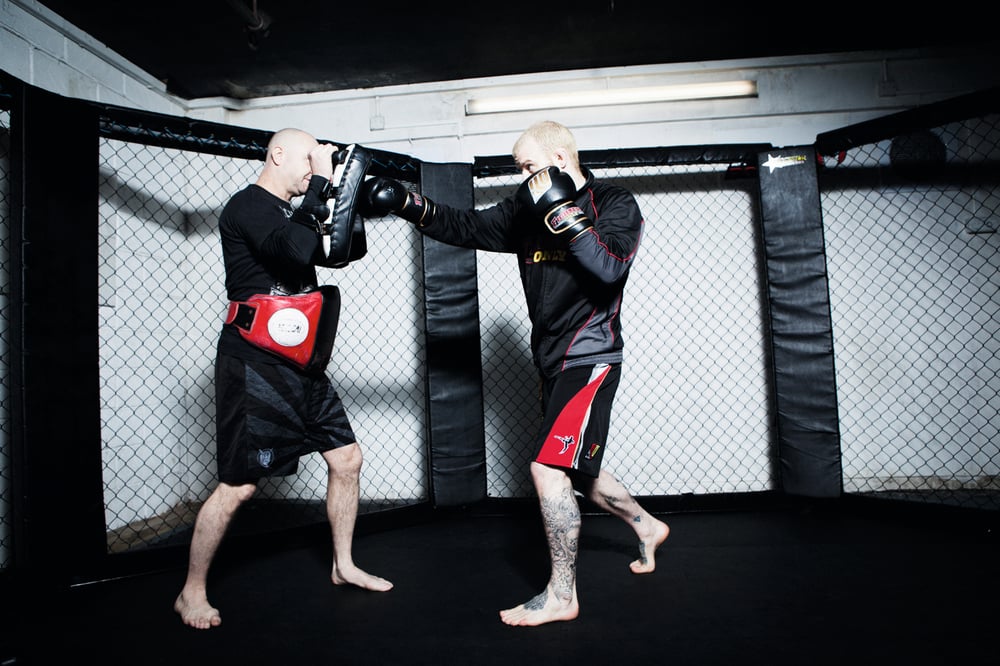
3. Steve holds the right pad slightly further away than the left, causing Pete to explore the complete range of the right cross.
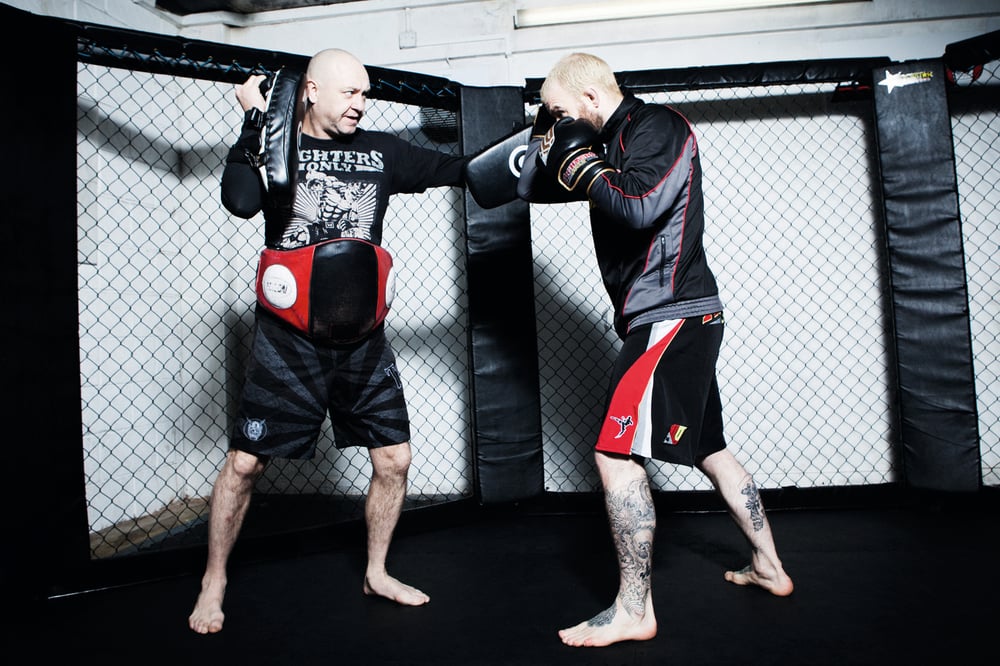
4. Steve strikes Pete hard with the pad immediately to test Pete’s cover and balance.
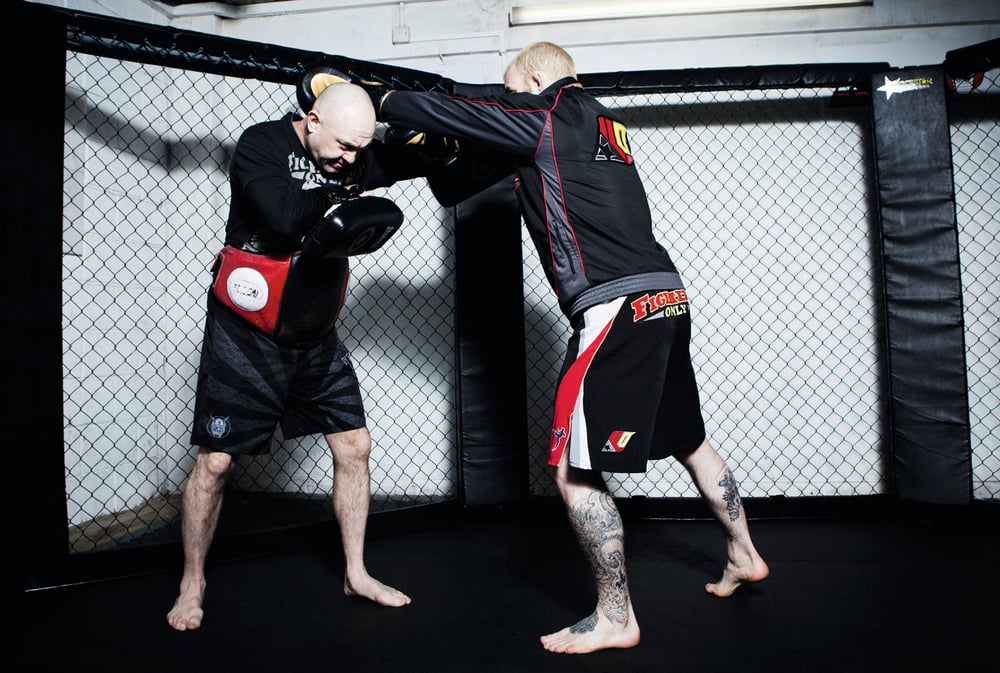
5. With Steve’s arm extended, Pete can grab a biceps tie, and reaches his right arm out, grabbing the back of Steve’s neck with a false grip.
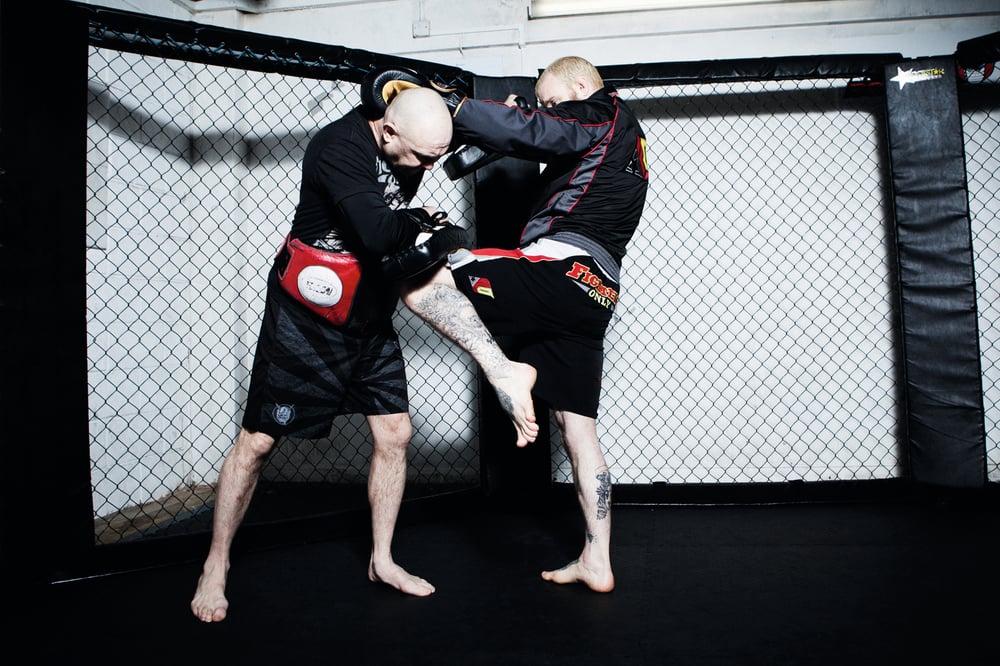
6. Pete points the toe, and drives his knee into the pad whilst pulling Steve into the strike. The knee is aimed at the body, not up into the pad.
HOOK-CROSS COUNTER
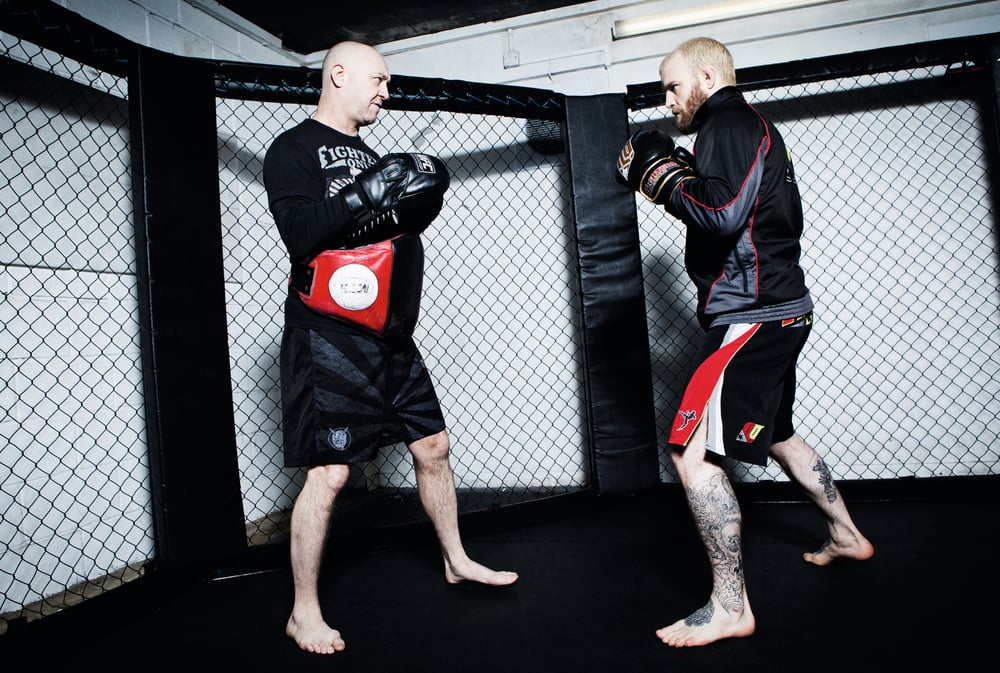
1. Pete (right) holds his hands high, up by his cheek, left hand slightly forward of the right. Coach Steve is ready with the pads.

2. Steve shows a one-two on the mitts.
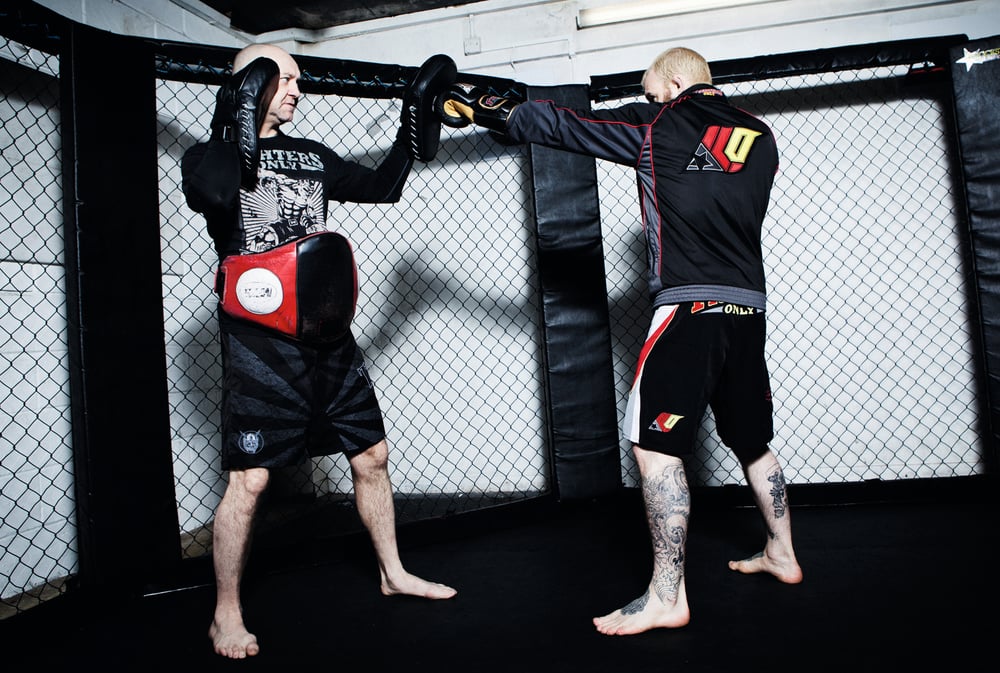
3. Pete snaps out a long, stiff jab as soon as he sees the pads face toward him.

4. Pete follows up with a straight right: screwing his back foot into the floor, rotating down through the ball of the foot, aligning the right hip and shoulder behind the punch, ‘slamming the door’. Steve puts a little resistance on the pads to ensure Pete does not hyperextended his elbows, which could cause injury.
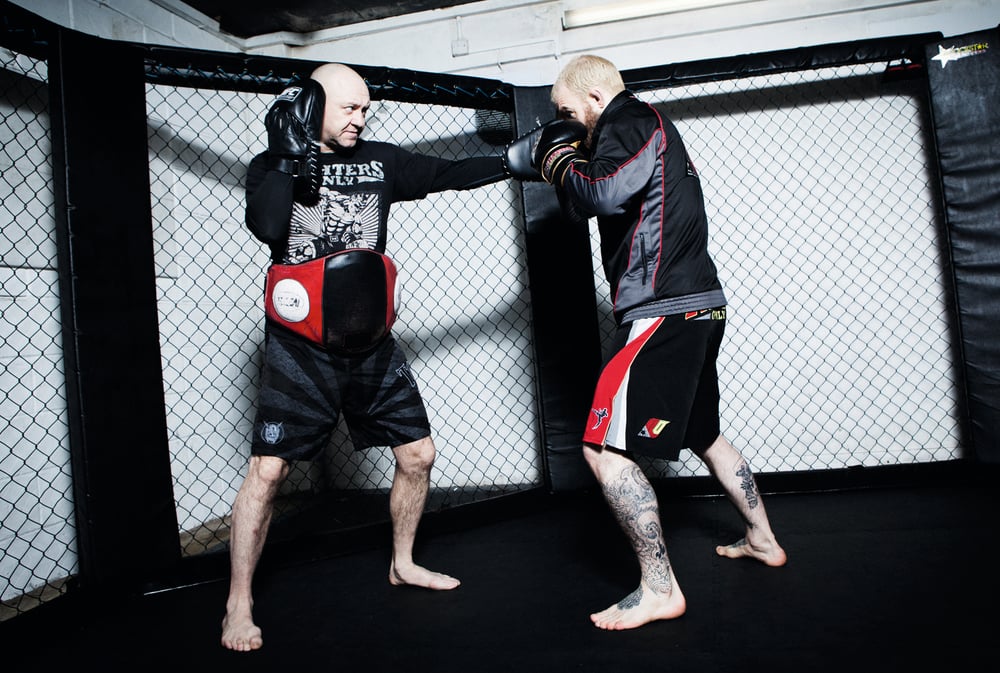
5. Steve immediately slaps Pete with the pad, checking that Pete’s hand has returned directly to his guard position. The classic mistake is to drop the hand before it returns home, which leaves you vulnerable to a left hook after the right cross. Pete brings his right arm up, tight against his head to cover the left hook.

6. Steve pulls the left pad back to show the left hook and Pete fires it, twisting his lead foot and driving with the legs, not the arm.
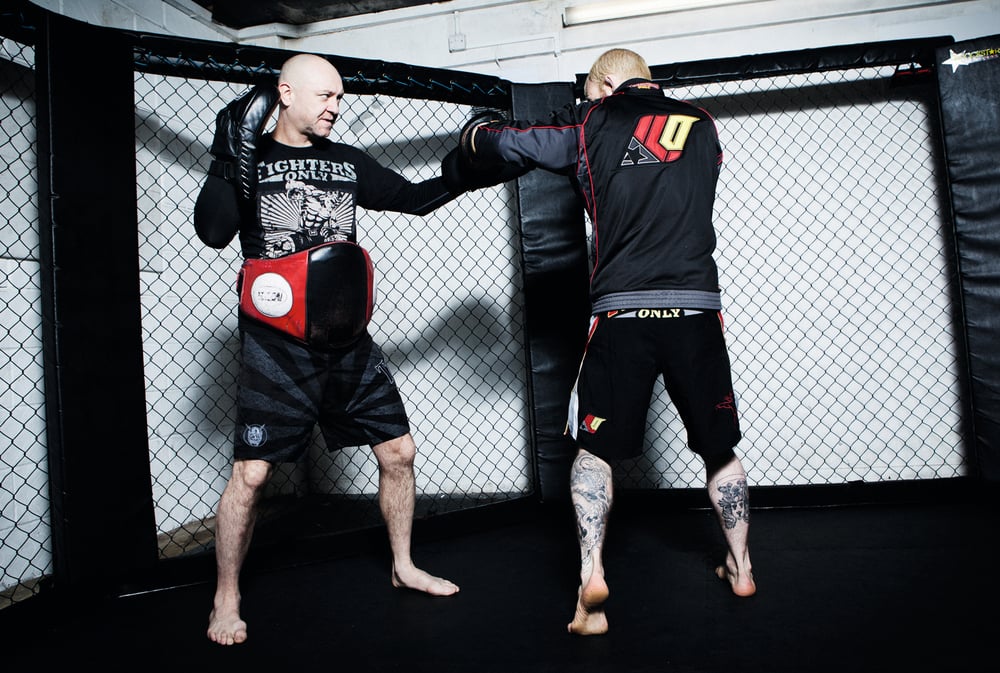
7. Pete’s rotation from the left hook sets him up to twist back and throw a straight right cross. Pete keeps his shoulders relaxed, and ‘sits down’ on the punch, meaning his legs and hips drive the punch, rather than the trying to generate force from the arm. He finishes the punch by squeezing his fist at the moment of impact.
LEFT BODY KICK COUNTER

1. Pete begins the combination again with the jab.

2. Pete throws the straight right.

3. Steve throws the pad to simulate the left hook. Pete ‘sits down’ as he covers the hook, using his legs like suspension to diffuse the force of the counter punch.

4. Having dipped his base down to receive the left hook, he is set up to return that force with a powerful left hook, again sitting down on the punch, whipping the hook at the end, connecting the power from his hip.
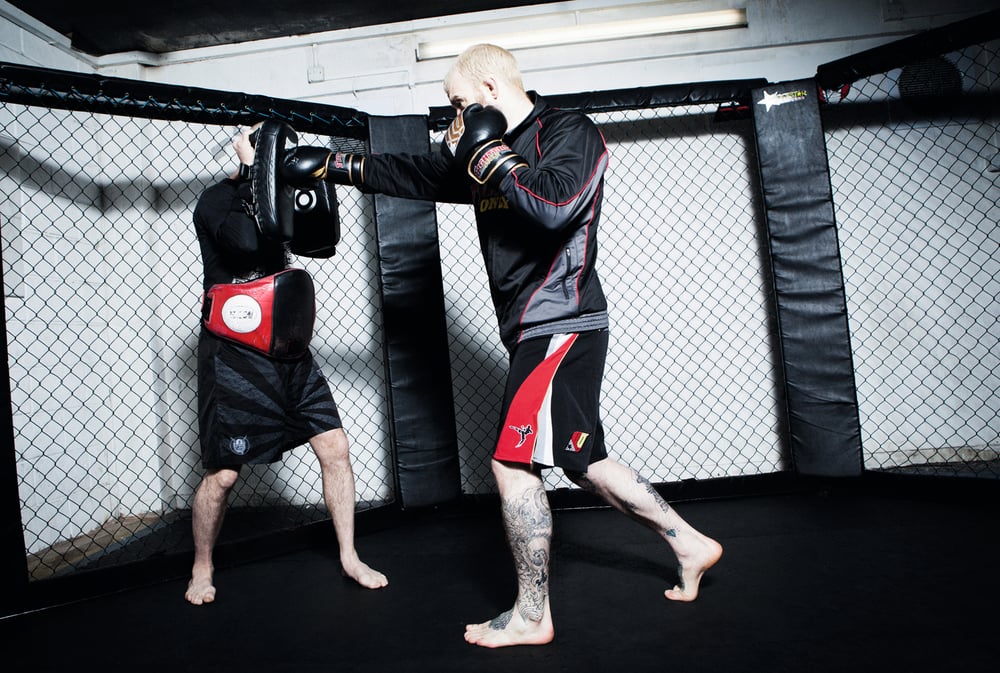
5. The action of the left hook sets him up to throw the right.
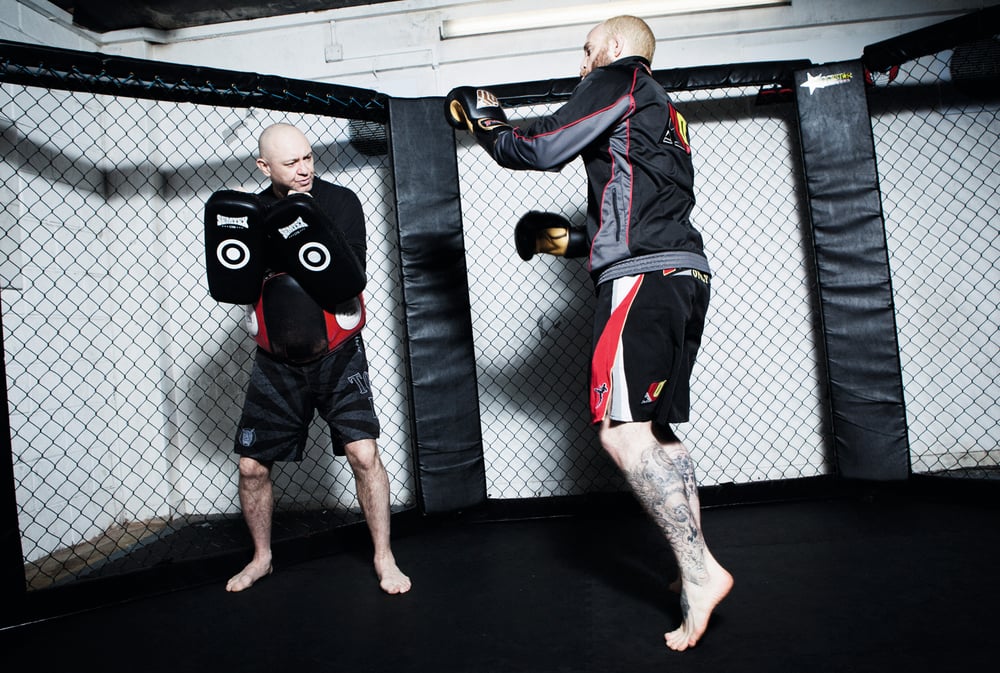
6. Pete pulls back after the right hand, springing off the left foot.
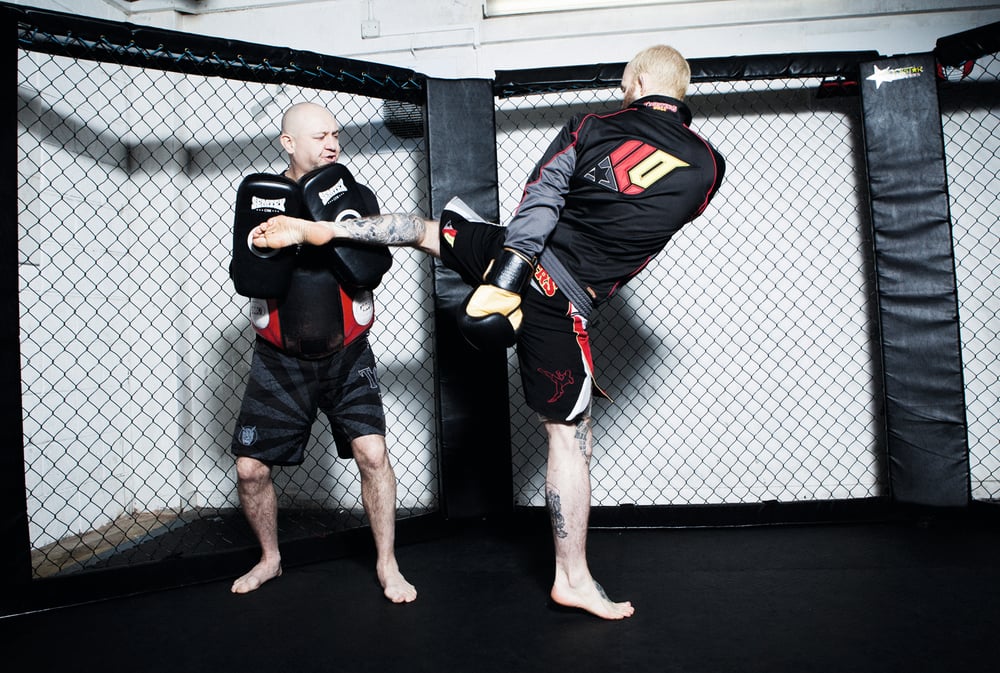
7. Pete drives the left kick into the body, twisting on the ball of the right foot. Pete’s left arm strikes back and pushes his hip forward to project the kick.
...









